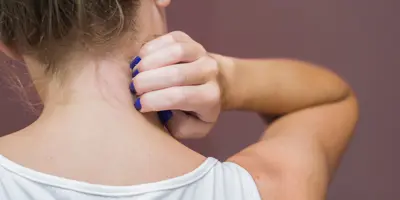402 people found this helpful
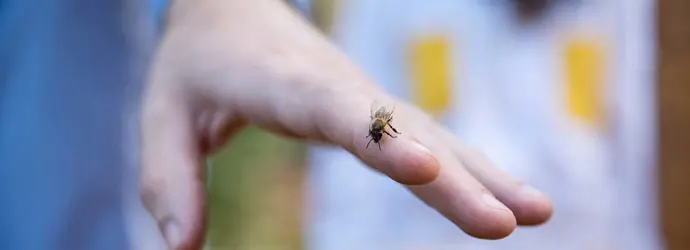
After ensuring everyone is wearing sunscreen, curating the perfect picnic basket, and setting up the best games, there’s nothing more likely to kill your buzz than a bee or wasp sting. Now, you might be tempted to ignore the pain – after all, you don’t want to disrupt the fun you’ve got planned. But you can’t possibly be the base of the human pyramid with a whopping great sting on your knee! Learn how to treat a bee sting at home with these remedies for bee stings and wasp stings – so you can get you back to the fun!
We’ll answer your questions, ‘how do you treat a bee sting at home?’ or ‘how to treat a wasp sting at home?’, by showing you the right way to remove bee and wasp stings, and by arming you with some simple wasp sting and bee bite home remedies. If you’re unsure about anything or are experiencing unusual symptoms as described below, seek medical advice.
Bee sting treatment at home: How to remove the sting
Before we give you the home remedies, and answer your questions on how to treat a bee sting at home, let’s focus on removing the stinger itself. Whilst bees leave their sting behind and die, wasps often don’t – although they may leave their stinger in if swatted during the stinging. It’s important that you stop handing out the mini cucumber sandwiches, and take a moment to tend to your sting so that the venom doesn’t continue to release.
There are two dos and don’ts to remember:
- Do. Scrape the sting out sideways with a fingernail, card or anything thin and flat.
- Don’t. Try to pull it out with your fingers or tweezers, as you risk snapping off the sting and leaving it in your skin.
How to treat a wasp sting at home in 3 ways
Now that you’ve got the sting out (hooray!), it’s time to focus on some remedies for bee stings and wasp stings – even just one of these home remedies can provide that comfort and self-care you so often forgo!
1. Home remedy for bee stings: Lemon and vinegar
Lemons and vinegar aren’t just for dressing the six assorted salads you’ve meticulously prepared for your picnic. They’re also a great option if you’re looking for a quick home remedy for bee stings and wasp stings that you can use as soon as the sting happens, without having to pop to the shop – again!
Lemons and vinegar contain a type of acid that will help to neutralise the sting and provide a soothing sensation. Any vinegar will do, but apple cider vinegar is ideal. Here’s how to use them:
- Lemon. Cut a slice and place it directly over the sting, or squeeze out as much juice as you can and soak a tissue in it, holding the tissue over the affected area.
- Vinegar. Soak a tissue in vinegar and rub over the sting – you can also try holding the tissue on the sting and apply a little pressure.
When you've been stung, it’s important to take a bit of time to look after yourself – by sunbathing on your picnic blanket for at least ten minutes, or locking yourself away for a warm bath when you get home. Luckily for you, it's easy to take a moment just for yourself, thanks to Cushelle Quilted toilet paper, offering a soft and skin-loving* clean every time. Why? Because you deserve it.
2. Wasp sting home treatment: ice and cold packs
Trying to ignore the pain of a wasp or bee sting for the sake of ensuring everyone gets the correctly labelled sandwich (with or without pickles, white or brown bread, categorically no crusts!) won't win you any awards. Especially when you can treat the pain with something as simple, and readily available, as ice. (Bet you’re regretting packing that picnic without a chilled bottle to pop!) Ice will help reduce swelling caused by the sting and slow down blood flow to the area, which will help with any throbbing pain. Here’s how to treat a wasp sting with ice:
- Either use a single ice cube or crush a couple to make a cold pack – wrap in strong kitchen paper or a cloth and hold over the sting for around 20 minutes.1
3. Home remedy for wasp sting: vegetables
This might sound strange, but using certain vegetables can be a great home remedy for wasp stings or bee stings. Here’s how:
- Cucumber. Simply take a slice and rub it over the sting – cucumber promotes a slight tightening of the skin, which will help ease the pain, and it also provides a cooling sensation. While you’re at it, why not cut some extra cucumber slices, lay back under the sun, and cover those eyelids for an all-natural spa experience! You know what Kenny would do…
- Garlic. Make a paste from a crushed clove, cover your sting with it, and place a plaster over the top – the garlic juices will get to work soothing the discomfort
When to seek medical attention
We always encourage using home remedies when you can, for ease and convenience, but there are a few instances where you should seek professional medical help:
- You’ve been stung close to your eyes, in your mouth or throat.
- Symptoms are worsening or aren’t improving after a few days.
- You develop flu-like symptoms, such as swollen glands and fever.
- You believe you may have had an allergic reaction – often indicated by a large area of about 10 cm or more becoming red around the sting.
- There are signs of infection such as increasing pain or swelling.
Now you know exactly what to do when you’ve been stung by a bee or a wasp, so you no longer have to pretend that sting isn’t hurting – a win for you, the smallest child with the cheesy grin at the top of the pyramid, and your swollen little knee! And, if you’re someone who loves the outdoors, and ends up with a nettle sting instead of a wasp or bee sting, discover these home remedies for nettle stings next.
*To verify claims, please email verify.uk@essity.com for full verification details.
Sources:
Related articles
Pollen allergy in children: How to cope with kids’ hay fever
The symptoms of pollen allergy in children can be tackled. Click here for tips on how to treat hay fever in children.
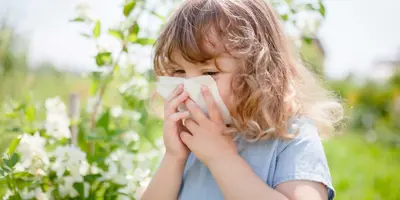
5 natural and herbal remedies for hay fever to try at home
Want to know how to treat a pollen allergy at home? Discover five options, from herbal teas and steaming to herbal remedies for hay fever relief, here.

What Causes Puffy Eyes? Causes and Treatments
Looking for a swollen eye allergy treatment? Need to know what to do for swollen eyes? Try our list of swollen eye allergy home remedy ideas.

7 pollen-proof hay fever remedies
Tired of itchy eyes and runny noses? Read on if you’re looking for natural remedies to get rid of hay fever. From herbs to honey, we have a range of solutions!
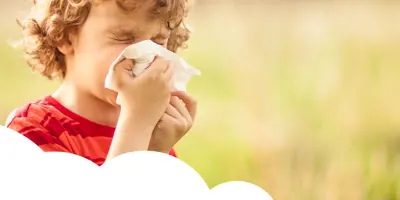
Home remedies for mosquito bites that will help relieve itching
What helps mosquito bites? There are all sorts of home remedies for itchy bites and stings. Read our guide to how to treat mosquito bites at home.
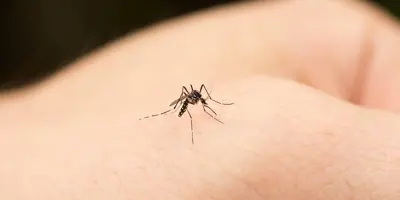
How to keep wasps away (and what to do if they get you)
Want to know how to keep wasps away during the summer? Discover our top handy tips, including what plants deter wasps and what to do about stings, here.
